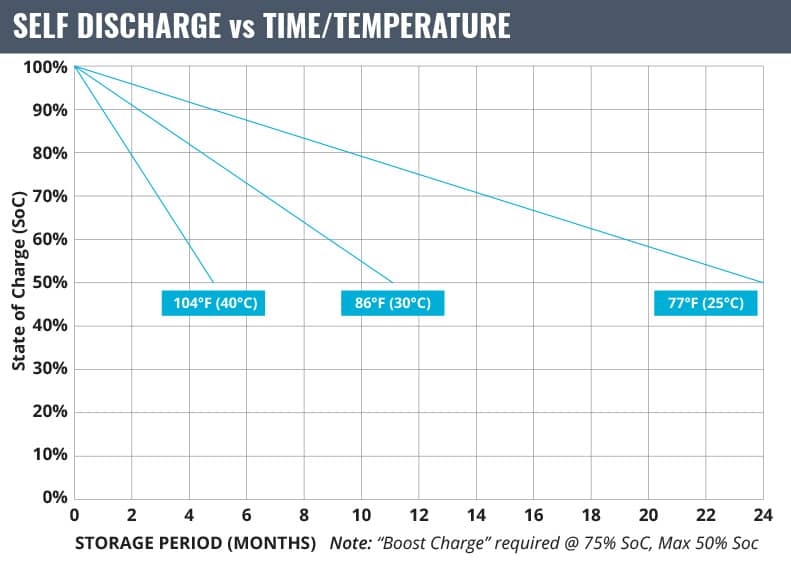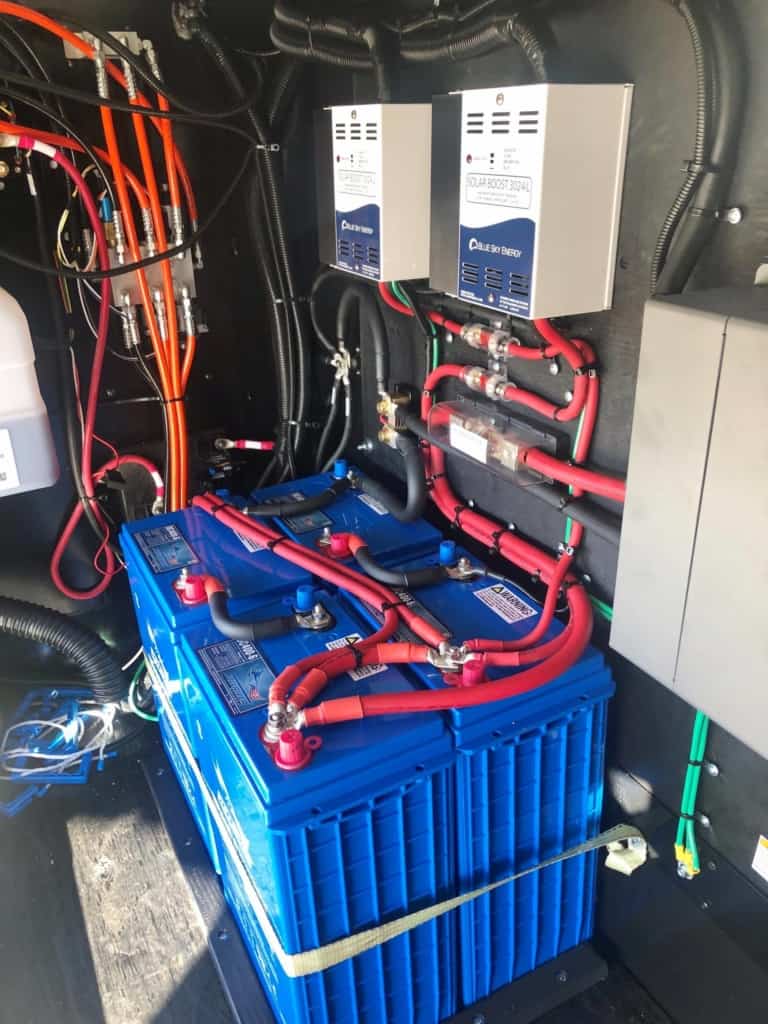Ahh, the change of the seasons, leaves turn pretty colors and drop, temperatures begin their gradual slide toward winter, life slows down, and all the relics of fair weather are put away. Engines are stabilized with additives, water lines are filled with anti-freeze, and then there are the batteries. It is this time of year that our support emails and phones usually get an uptick in activity as concerned citizens write/call to make sure they’re doing everything right to protect their investments until spring returns. The usual caveat we add at the beginning of almost every article applies here as well: This advice only applies to Fullriver AGM and Gel batteries.
Spoiler Alert!
While we will talk about some of the factors to consider and delve into the “why” of our winterizing solution, there’s really no need to drag out the answer like some googled recipe that forces you to swipe past 50 ads before the big reveal of the ingredient list is unveiled. Here it is:
To properly store your battery for the winter, after fully charging the battery or set of batteries, remove the main negative cable from the pack, and set aside so that it cannot inadvertently come back into contact with the terminal during storage.
It is really that simple. Go have a pumpkin latte or something.
But, why?
The reason we can unhesitatingly recommend this approach is related to three factors, time, temperature, and internal resistance. Obviously, winter doesn’t last forever, even though it can seem that way in some places. Even if it was 6-9 months of storage, if it’s cool weather the whole time, no problem. The second reason is related to this, several months spent in temps at or below 25°C/77°F will only have a nominal impact on the battery’s resting voltage. This is all true because of the low internal resistance of Fullriver batteries. Internal resistance is also referred to as self-discharge. Because of the purity of lead in our batteries, the rate of self-discharge at or below 25°C/77°F is very low.
This handy graph should offer more statistical assurance:
Parasites
Just for the sake of thoroughness, some may be wondering if the battery can be stored for so long without charging, why disconnect the negative cable from the battery. This is due to parasitic draw. It would be very rare to find a vehicle in any form that doesn’t have some device, in RV’s it may be a carbon monoxide detector, in other vehicles it may be the vehicle computer, but they all have something that creates the tiniest draw on the battery, even when everything seems like it’s powered down. A long duration of parasitic draw over several months does more than just slowly bring the voltage down. The effect of a parasitic draw over long periods without recharging can permanently damage the plates of the battery, causing a permanent loss of capacity.
Battery Tender
Oh, yes, we get calls and emails about using battery tenders all the time. Unfortunately, we have seen many overcharge scenarios because of using such devices. They are a dime a dozen, and for one reason or other, they can be problematic. Since there is really no need to use them during winter storage, it is better to just forego their use and avoid any potential problems they may create.
What if it’s too cold?
For storing Fullriver batteries, there are very few places on earth, inhabited by people, that actually get cold enough to be a problem. Yes, -70 in Siberia is too cold, but anything above -40C/F should be fine. Fullriver batteries contain very little water, and if they are charged then actually freezing the batteries is a very low probability.
So, bring on the cold, and don’t worry about your batteries for a few months. Once the temps improve, give the batteries a full charge and resume use as normal. If you have questions, please leave us a comment below.





